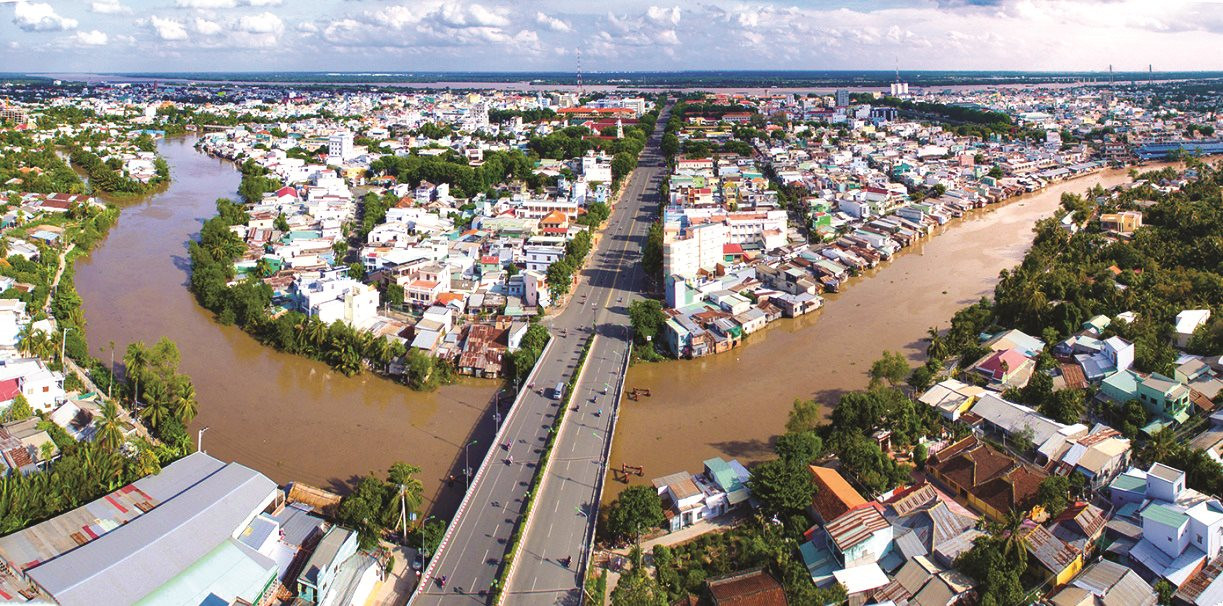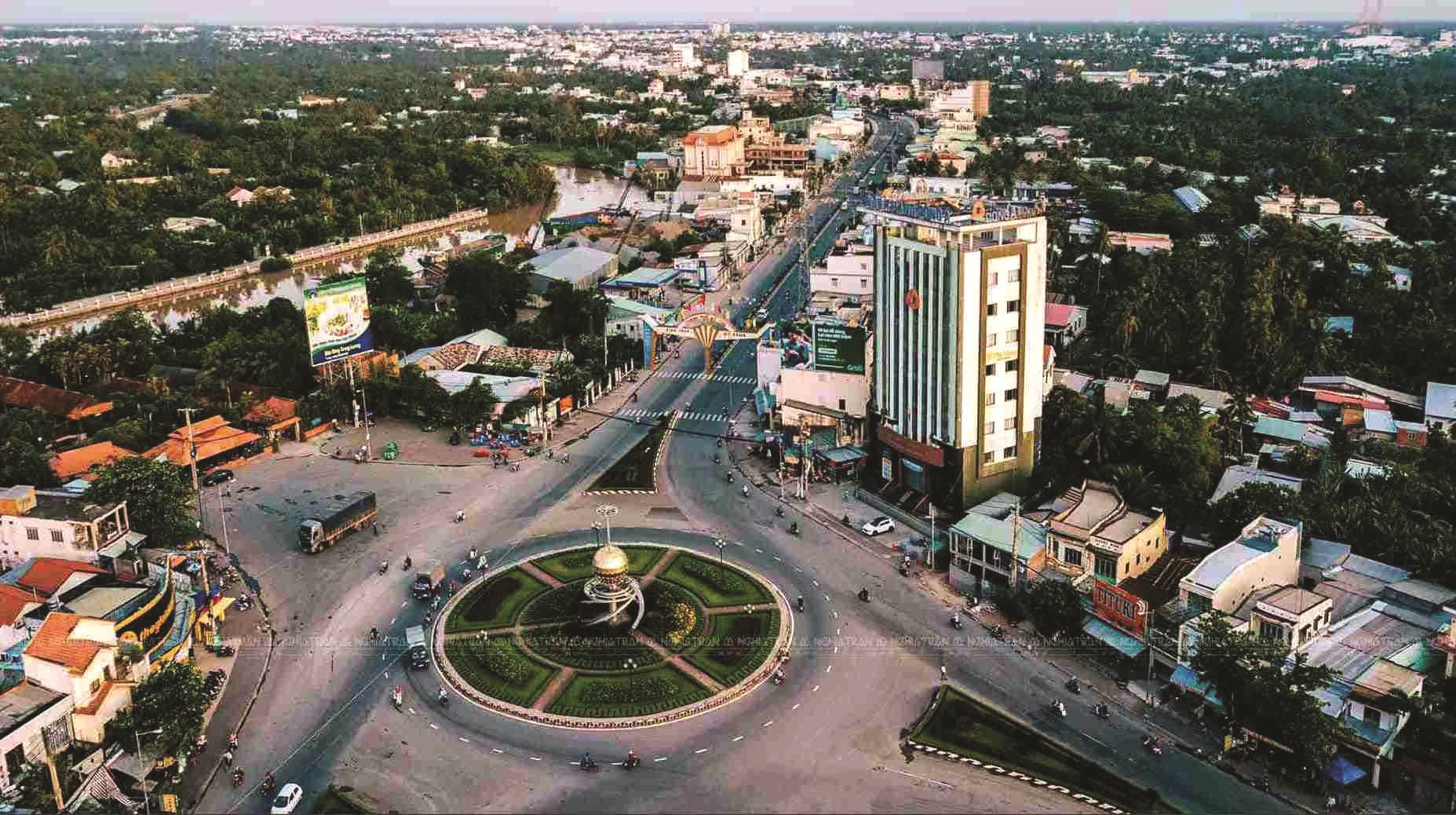Transportation & logistics in Tien Giang: “Take a shortcut to lead”
English - Ngày đăng : 09:11, 13/10/2023
In other words, Tien Giang serves as the gateway for the provinces in the Southwestern region to access Ho Chi Minh City and the Southern Key Economic Zone.
Pioneering in Transportation Development
Currently, the entire province of Tien Giang has one expressway, which is the Ho Chi Minh City - Trung Luong - My Thuan expressway. It has four national highways in operation (NH1, the bypass of NH1 in Cai Lay town, NH50, NH60, and NH30), as well as 33 provincial roads.

The section of the Ho Chi Minh City - Trung Luong - My Thuan expressway passing through the province spans 62.506 kilometers. The Ho Chi Minh City - Trung Luong section has been operational since 2010, while the Trung Luong - My Thuan section commenced operations on April 30, 2022.
The total length of the four national highways within the province is 137.07 kilometers, with the bypass of NH1 in Cai Lay town covering 12.02 kilometers. Among these national highways, NH1, which passes through the province, is frequently congested due to high traffic volume. NH60, connecting with Ben Tre province, experiences traffic congestion at the Rach Mieu Bridge during holidays, weekends, and peak hours as it serves the travel needs of people commuting between Ho Chi Minh City and provinces such as Ben Tre, Tra Vinh, Soc Trang, and vice versa. NH30, linking with Dong Thap province, is currently undergoing expansion and improvement. NH50, connecting with Ho Chi Minh City via Long An, has been fully upgraded to level III and is efficiently operational. All these national highways play a vital role in the economic and social development of Tien Giang Province, the Southern Key Economic Zone, and the Mekong Delta region.
The total length of the 33 provincial roads is 518.021 kilometers. The province continues to invest in the construction and improvement of the provincial road network, connecting it with the national highway and expressway systems, creating a more efficient road transportation network that serves the needs of the local population and facilitates the transportation of passengers and goods within the province.

“Identifying transportation infrastructure as one of the strategic breakthroughs, Tien Giang Province has invested rapidly and comprehensively in a transportation system that enhances regional connectivity within and beyond the province, driving local economic development,” said Mr. Tran Van Bon, Member of the Provincial Party Committee and Director of the Tien Giang Province Department of Transportation.
In addition to road transport, Tien Giang also has an extensive inland waterway network, comprising national and local waterways, with 114 routes and a total length of 1,046.11 kilometers. This includes 8 routes in the national inland waterway system with a total length of 213.5 kilometers, primarily at the special grade, and 106 routes in the local inland waterway system with a total length of 832.61 kilometers, primarily at grade IV. The province has a wide distribution of ports and terminals, including 10 ports (1 multipurpose port, 8 specialized ports, and 1 passenger port) and 705 inland waterway terminals, serving both cargo and passenger transport along the rivers.
Regarding maritime transport, Tien Giang has two maritime routes, Soai Rap and Cua Tieu, with a total length of 86.25 kilometers, passing through the districts and cities of My Tho, Cho Gao, Tan Phu Dong, Go Cong Dong, and Go Cong Tay. These maritime routes are served by two seaports, My Tho Multipurpose Port and Soai Rap - Hiep Phuoc Oil Port.
Mr. Tran Van Bon emphasized that following the tradition of "taking a shortcut to lead the way" in the transportation sector of Vietnam, the Tien Giang Department of Transportation has played a significant role in the local economic and social development, as well as in connecting value chains with the Southern Key Economic Zone.
A coordinated and rational approach to various transportation methods is sought, forming a seamless transportation network linking the provinces in the region, catering to transportation needs. High-quality transportation development with reasonable costs, minimized traffic accidents, environmental pollution reduction, and efficient energy use is a priority. The province also aims to leverage advanced transportation technologies, especially multimodal transportation and logistics.
Vision for 2050
The development perspective of Tien Giang is centered around ensuring that the transportation infrastructure is harmonized with the region's development goals and directions of the Mekong Delta region and the Southern Key Economic Zone. It must align with the province's economic and social development objectives and related sectors. Simultaneously, the development of the transportation infrastructure in Tien Giang should capitalize on the province's strategic location as a gateway connecting the Western provinces to Ho Chi Minh City. It aims to strengthen close connections with two major centers, Ho Chi Minh City and Can Tho City, as well as connect to the cross-border Vietnam - Cambodia waterway transport route along the Tien River.
A coordinated and rational approach to various transportation methods is sought, forming a seamless transportation network linking the provinces in the region, catering to transportation needs. High-quality transportation development with reasonable costs, minimized traffic accidents, environmental pollution reduction, and efficient energy use is a priority. The province also aims to leverage advanced transportation technologies, especially multimodal transportation and logistics.
Given the limited public investment budget, Tien Giang Province aims to maximize its internal resources and attract various economic entities from different sources and forms of investment for transportation infrastructure development. It allocates land resources rationally for infrastructure development and transportation, integrating transportation with national defense and security.
Tien Giang strives to achieve specific transportation goals by 2030. The province aims to handle 33 million tons of freight transportation, representing an average annual increase of 11.16% during the 2021-2030 period. Additionally, it targets 71.39 million passenger movements, with an average annual growth rate of 7.58% during the same period. Looking ahead to 2050, Tien Giang anticipates handling 102.1 million tons of freight transportation, marking an average annual increase of 5.81% during the 2031-2050 period, along with 184.14 million passenger movements, reflecting an average annual growth rate of 4.85%.

Railways: Tien Giang has plans to construct a new railway line as part of the national railway system, the Ho Chi Minh City - Can Thơ railway line. This double-track line with a gauge of 1,435 mm and a total length of 174 km is expected to traverse four districts and towns in the province: Chau Thanh, Tan Phuoc, Cai Lay, and Cai Be, along with Cai Lay town. This railway will be a significant addition to the province's transportation infrastructure.
Inland Waterways: Plans include the expansion, dredging, renovation, adjustment of water flows, and upgrading of major water routes, such as 28 Canal, Thap Muoi No. 2 Canal, and Xang Long Dinh Canal. The second phase of the Cho Gao Canal upgrade will also be completed.
To achieve these development objectives, the transportation infrastructure development plan for the period from 2021 to 2030, with a vision to 2050, includes the following:
Roads: Tien Giang's road network consists of key north-south routes (expressways such as Ho Chi Minh City - Trung Luong - My Thuan - Can Tho, Hong Ngu - Tra Vinh, Ho Chi Minh City - Tien Giang - Ben Tre - Tra Vinh - Soc Trang; NH1, coastal roads, NH30, NH30C, NH62, NH50, NH50B, and primary east-west routes (NH1, NH30B, NH60, etc.). This network aims to establish the province's core transportation system, complemented by provincial, district, communal, and village roads for convenient local travel.
Maritime Transport: Maintenance of two maritime routes, Soai Rap and Cua Tieu, will be carried out to ensure safe and efficient navigation. By 2030, Tien Giang aims to establish two port areas: Go Cong Port on the Soai Rap River, designed to serve the economic and social development of Tien Giang Province and neighboring areas, and My Tho Port on the Tien River, intended to support the province's economic and social development. These ports will accommodate vessels with a capacity of up to 70,000 tons and 5,000 tons, respectively.
Mr. Tran Van Bon, Director of the Tien Giang Department of Transportation, emphasized that in the coming years, the province will continue to prioritize strategic investments in major east-west and north-south transportation routes. This includes roads such as Provincial Roads 864, 872, 877C, 879, which are oriented to link regions and boost local economic and social development. Moreover, the province will upgrade its rural transportation network to contribute to achieving the standards of a new rural area by 2025.
